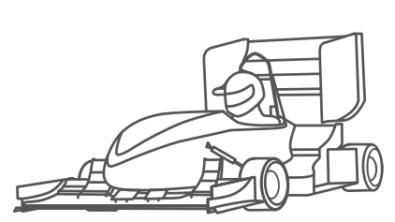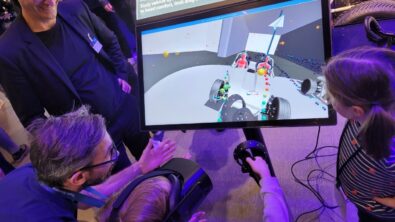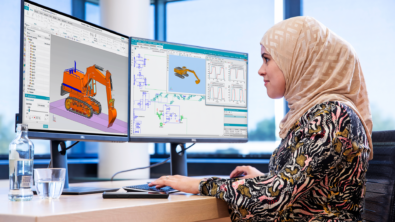How Virtual Reality (VR) is changing the way you design, promote and sell

 Simcenter STAR-CCM+ Virtual Reality Experience
Simcenter STAR-CCM+ Virtual Reality Experience
“Your move, Elon!” screamed the billboard just outside the Palexpo Convention Center in Geneva, venue of the Geneva International Motor Show (GIMS) 2018. Press day at GIMS 2018 was in full swing and most of the conversation centered on who would be the biggest competitor for Tesla, Elon Musk’s brainchild and the most recognizable electric vehicle. Except Tesla was not even in attendance!
 Image source: https://electrek.co
Image source: https://electrek.co
It’s no surprise that Tesla famously avoids auto shows and spends very little on Marketing. Yet they are the ’talk of the town’ even when they’re conspicuously absent. Why? A rockstar CEO who owns social media, a sister-company that launches rockets and his cars into space and most importantly, a revolutionary product that disrupts the industry and ushers in the future of transportation. Put them together and your sales and marketing is practically done for you. Not all of us have this luxury though. No matter how great and disruptive your product is, conveying the benefits of your product and technology with the right messaging and marketing and sales strategy is still the way to sell your product.
What does any of this have to do with Virtual Reality? Why am I talking about marketing in a blog dedicated to simulation & testing? Because designing an innovative product with the best-in-class simulation and testing tools doesn’t mean your job is done today. Let me explain!
How VR is changing the way you communicate in the CAE world
At GIMS 2018, Applus+ IDIADA showcased the CRONUZ project, an EV compact SUV concept car with breakthrough aerodynamic solutions. The Cronuz includes active and passive aerodynamic enablers that focus on key areas such as the wheelhouses and underbody that in combination with an optimized body design provides an eye-popping drag coefficient of 0.19. The car was designed with Simcenter STAR-CCM+ driving the aerodynamic development and optimization. Applus+ IDIADA now had some challenges:
- How to quickly convey the aerodynamic benefits from their innovative design to customers?
- In the glitzy, glamorous auto show, how to attract the right audience to their booth and stand out?
Aside from standing in a wind tunnel next to the car (please don’t!), how do you visualize the aerodynamics of the car in a safe, immersive way? Enter Virtual Reality. The prototype was there, of course – pearly white with active enablers moving at the touch of a button. Right next to it? A VR station with a virtual simulation model of the car in Simcenter STAR-CCM+ VR.
 Showcasing the breakthrough aerodynamics of the Cronuz in (virtual) reality
Showcasing the breakthrough aerodynamics of the Cronuz in (virtual) reality
GIMS attendees could look at the active and passive enablers on the Cronuz in the physical world, and then enter an immersive VR environment, where they could visualize the airflow from simulation, deploying massless particles under their individual control, to quickly reveal how these enablers work. In moments, attendees could see the flow staying attached on the side of the car and underbody farther than it usually does and this clearly explained the very low drag. The benefits of Applus+ IDIADA’s design were immediately apparent. You can see what the attendees got to experience with the model in the video below.
Now can your simulation tool do that? If it doesn’t support VR, you are still walking into meetings and events armed with powerpoint presentations full of images, graphs and videos. Meanwhile, your competition is deploying VR to convey the benefits of their designs in an immersive way, giving their audience an interactive experience to quickly realize why their designs are better.
From design to marketing to sales, VR is everywhere
This, of course, is just the added benefit of virtual reality. An earlier blog by my flamboyant colleague, Matthew Godo, explained the engineering benefits of VR for simulation engineers. Technology companies are also deploying VR in their design and engineering where the real value lies. SpaceX and Jaguar Land Rover are just examples of innovative companies already using VR to interact with engineering data. As early as 2013, you can see a younger Elon Musk explaining the benefits of VR in rocket design in this video. Jaguar Land Rover is successfully utilizing VR in both product design and sales. These are just a couple examples from early adopters of VR. From gaming to medical to Hollywood, the reality is that VR is now everywhere. Whether you are involved in CAE, product design, management or marketing, the inescapable truth is that Virtual Reality is here to improve the way we design, understand, communicate, market and sell.
The future is VR (until the next technological revolution comes)
The market for VR is an estimated $60 billion in a decade. Corporations and industries have taken the lead in adopting this consumer technology already. At GIMS, Jaguar Land Rover unveiled their new electric car, I-PACE that’s been such a hit. Every time I walked past, I noticed a line of people to look at the car. But strangely, there was a line just as long next to the car – for their VR stations where users can take a virtual look at the car. Anectodal? Maybe. But this was the case with every VR station at every event I’ve been to in the last year. Your customers and prospects are seeking out immersive technologies to understand your product. Are you well equipped to deliver an immersive experience to them? This brings us to engineering and product design.
Is your product design team failing your product without VR?
Technology companies, whether B2B or B2C, are all jostling for space in the modern-day marketing space. Social media, internet connectivity and technological innovations have changed the landscape of communication. The role of product design and engineering has spilled over to include tasks that help market and sell your product as well. Case in point? All of us have a Linkedin/Facebook profile and actively promote and share news about the products, technologies and companies we are passionate about. We are all marketers now, engineers and designers alike. Why? Because
“Marketing is too important to be left to the marketing department” – David Packard
Marketing tells the story. The engineering and technology team provides the ammunition for the story. How do you convey the benefits of your technology to the customer? Can you effectively show why your product/design works the way it works? Are you communicating effectively with teams spread across the globe? Can your audience understand your product in an interactive, engaging way rather than staring at images, animations and powerpoints? Are you helping or hurting your product’s cause? The answer to all of this lies in adoption of VR.
As someone who has transformed from an aerospace engineer to technical marketing to marketing communications, here are my top benefits from using VR in the areas I’ve been involved with in my career.
In CAE:
- Manipulating complex models is easier and faster with VR.
- Post-processing in the virtual reality world with massless particles is faster and more intuitive
- Operations done with a mouse and a keyboard to analyze data can be done faster with VR, enabling greater understanding of your design.
- Low cost of entry (For example, a HTC Vive (around $650) and a laptop or workstation equipped with a capable graphics card (less than $1000) is all you need.
- Easier collaboration with different teams where VR will help convey design characteristics and simulation results better
- Easily convey benefits of different designs and ideas to a non-CAE audience (management, business leaders, consumers) with an immersive experience
In Technology Marketing & Sales:
- Offer a personalized, immersive experience unique to your product and company
- Improve participation from customers and prospects at events
- Low cost of entry with a big payoff
- Convey your product’s design benefits better than your competition
Lead with VR or be left behind
In this 2017 article, Professor Anthony Steed who leads the Virtual Environments and Computer Graphics group in the Dept of Computer Science at UCL talks about the use of VR to transform engineering processes. He states,
“Over the next two years, consumer technology should begin to meet the needs of engineering. There are a number of opportunities for companies to innovate in this area through software that combines established engineering tools with the new interactive opportunities of VR”
In the CAE world, Simcenter STAR-CCM+ VR is the first to successfully marry the consumer technology of VR and numerical simulation from within the software. No additional product or license is needed. All you need is a HTC Vive headset and the power of virtual reality will be at your fingertips. This is just the beginning. Future enhancements to this technology will bring the power of collaborative visualization and quantitative data analysis to the virtual reality world, changing the way simulation and product design is done.
Early adopters of VR in other industries are already creating better products faster with insights gained from the immersive VR world. Companies are deploying VR in sales and marketing to offer a customized product experience with minimal effort. Your customers are understanding your competitors’ products better in an immersive world.
The reality is this:
If you’re not actively utilizing or planning to deploy virtual reality, you are hurting your bottom line.


